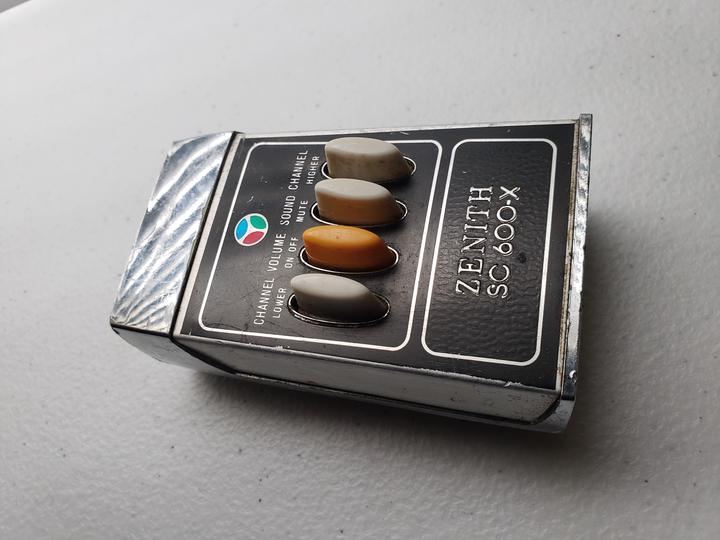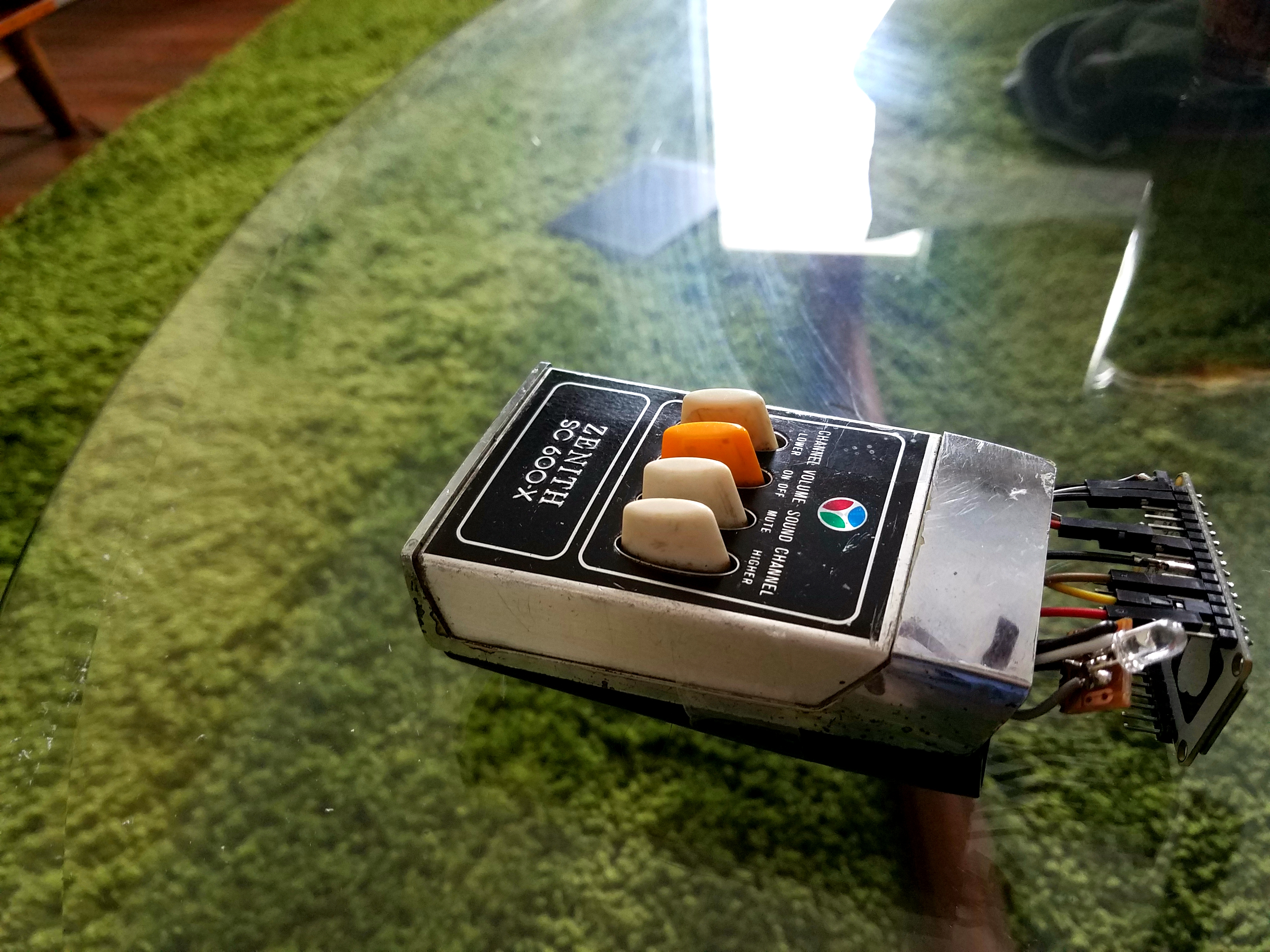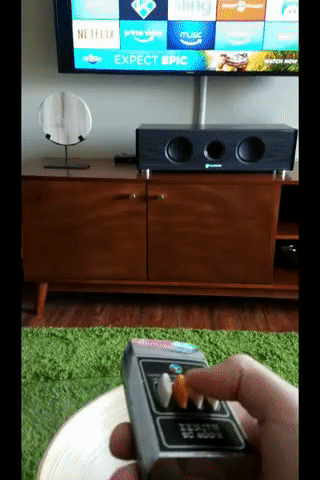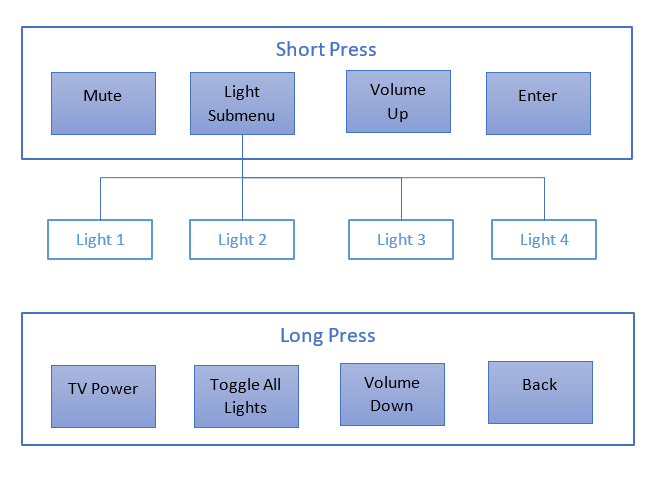Vintage Smart Remote

Overview
The Zenith Space Command was the first commercially available remote. It was battery-free and worked by using ultra-sonic clicks in order to communicate with the television. In essence, it was a musical instrument that only the television could hear. The goal of this project was to modernize the remote, maintaining its original form-factor and styling but adding WiFi and IR capabilities.
There were several goals to the project:
- WiFi-enabled
- Able to control TV, stereo, and lights
- Dependable
- User-friendly
Approach
As WiFi is notoriously power-hungry, enabling it in a remote device is a challenge. Another challenge was the limited number of buttons available. The one positive aspect of the project is that the remote is fairly large, by today’s standards, which allowed for a lot of room to add components. An ESP8266 chip was selected for its WiFi capabilities. This was combined with a battery and wireless charger. The additional components were the IR transmitter for local devices and a vibration sensor for battery management.
Hardware
Build
Many of the original components were removed and the button contacts were wired to the microcontroller. A new support was designed and 3d-printed to house all of the components and hold the battery.

Microcontroller
The ESP8266 chip is a common starting point for many similar projects. It has a small footprint and quite capable, in fact overly capable for this project.
Battery
An 800mAh battery was used as it was the largest battery that would still fit in the given space. It provides a decent amount of power for the project, but not nearly enough for a reasonable remote control without adjustments.
Charging
In order to be more dependable and user-friendly without sacrificing the aesthetics, wireless charging was incorporated to allow it to be charged on any Qi-enabled charge pad.
Additional Components
IR was added for local components (i.e. TV and stereo). A vibration sensor was also added in order to reduce battery usage. Without modifications, the remote lasted around 4 hours with the WiFi connection. However, by going into deep sleep until the vibration sensor is activated, this has been extended to over a week on a single charge, depending on usage. There is no discernible difference in functionality due to deep sleep.

Software
The microcontroller was programmed with the Arduino IDE. WiFi SSID is set with an WAP if no connection can be established. The WAP allows the user to scan the local WiFi networks, select the desired connection, and add a password.
Button Configuration
Due to the lack of inputs, each button has two input methods: short press and long press. In addition to short and long presses, a single press of the yellow button allows for each of 4 lights to be controlled individually. This means there are a total of 11 button functions instead of 4.
WiFi Communication
In order to ensure ease of updates, the remote does not communicate directly with each smart device. Instead, an MQTT message is sent to a broker run through FLASK on a cloud server. The server then sends the appropriate command to the specified device.
Results
While the functionality of the remote is not as user-friendly as hoped, the other aspects of the project were quite successful. The styling and innovation from nearly 70 years ago has been modernized to accommodate for current technologies.

